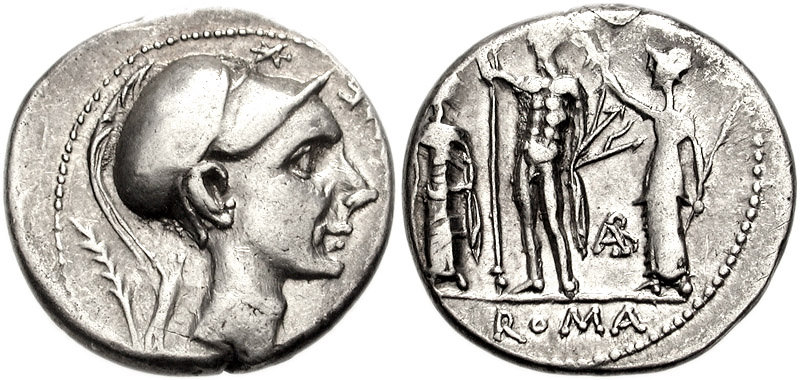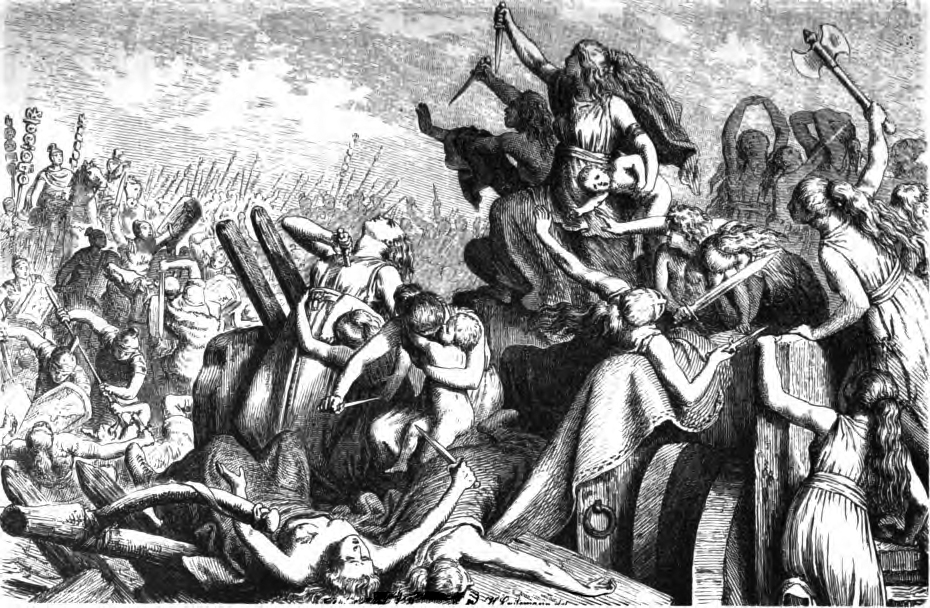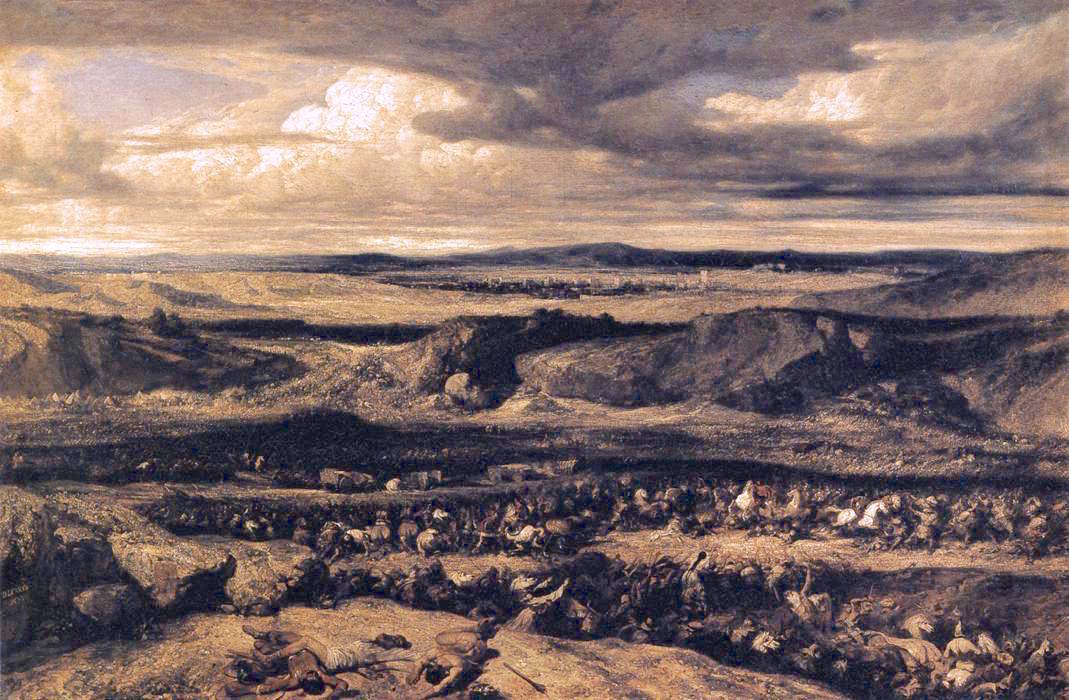|
Noreia
Noreia is an ancient lost city in the Eastern Alps, most likely in southern Austria. While according to Julius Caesar it is known to have been the capital of the Celtic kingdom of Noricum, it was already referred to as a lost city by Pliny the Elder (AD 23 – AD 79). The location of Noreia has not been verified by modern researchers. Relevance The kingdom of Noricum was a major provider of weaponry for the Roman armies from the mid-Republic onwards. Especially the Roman swords were made of the best-quality steel then available, the '' chalybs Noricus'', from this region. The strength of iron is determined by its carbon content. The wrought iron produced in the Greco-Roman world generally contained only minimal traces of carbon and was too soft for tools and weapons. It thus needed to be carburised to at least 1.5% carbon content. The main Roman method of achieving this was to repeatedly heat the wrought iron to a temperature of over 800 C (i.e. to "white heat") and hammer ... [...More Info...] [...Related Items...] OR: [Wikipedia] [Google] [Baidu] |
Battle Of Noreia
The Battle of Noreia, in 113 BC, was the opening battle of the Cimbrian War fought between the Roman Republic and the migrating Proto-Germanic tribes, the Cimbri and the Teutons (Teutones). It ended in defeat, and near disaster, for the Romans. Prelude The Cimbri and Teutones left their home lands around the Baltic sea in the Jutland peninsula and Southern Scandinavia. They travelled southeast and encountered the Scordisci, with whom they fought. Following their victory over the latter, they arrived at the Danube in Noricum (113 BC), which was home to the Taurisci, who were allied with Rome. Unable to repel these new invaders, the Taurisci appealed to Rome for assistance. The consul Gnaeus Papirius Carbo responded the following year, leading the legions into Noricum, where he took up a position on the heights near Aquileia. Battle Carbo ordered them to vacate the territory of the Taurisci at once. The Cimbri had heard many stories from other tribes about the fearsome power ... [...More Info...] [...Related Items...] OR: [Wikipedia] [Google] [Baidu] |
Noricum
Noricum () is the Latin name for the Celtic kingdom or federation of tribes that included most of modern Austria and part of Slovenia. In the first century AD, it became a province of the Roman Empire. Its borders were the Danube to the north, Raetia and Vindelici to the west, Pannonia to the east and south-east, and Italia ( Venetia et Histria) to the south. The kingdom was founded around 400 BC, and had its capital at the royal residence at Virunum on the Magdalensberg. Area and population Around 800 BC, the region was inhabited mostly by the people of the local Celtic Hallstatt culture. Around 450 BC, they merged with the people of the other core Celtic areas in the south-western regions of Germany and eastern France. The country is mountainous and rich in iron and salt. It supplied material for the manufacturing of arms in Pannonia, Moesia, and northern Italy. The famous Noric steel was largely used in the making of Roman weapons (e.g. Horace, ''Odes'', i.16.9-10: '' ... [...More Info...] [...Related Items...] OR: [Wikipedia] [Google] [Baidu] |
Noricum 1907
Noricum () is the Latin name for the Celtic kingdom or federation of tribes that included most of modern Austria and part of Slovenia. In the first century AD, it became a province of the Roman Empire. Its borders were the Danube to the north, Raetia and Vindelici to the west, Pannonia to the east and south-east, and Italia (Venetia et Histria) to the south. The kingdom was founded around 400 BC, and had its capital at the royal residence at Virunum on the Magdalensberg. Area and population Around 800 BC, the region was inhabited mostly by the people of the local Celtic Hallstatt culture. Around 450 BC, they merged with the people of the other core Celtic areas in the south-western regions of Germany and eastern France. The country is mountainous and rich in iron and salt. It supplied material for the manufacturing of arms in Pannonia, Moesia, and northern Italy. The famous Noric steel was largely used in the making of Roman weapons (e.g. Horace, ''Odes'', i.16.9-10: ''Nor ... [...More Info...] [...Related Items...] OR: [Wikipedia] [Google] [Baidu] |
Roman Army Of The Mid-Republic
The Roman army of the mid-Republic, also called the manipular Roman army or the Polybian army, refers to the armed forces deployed by the mid-Roman Republic, from the end of the Samnite Wars (290 BC) to the end of the Social War (88 BC). The first phase of this army, in its manipular structure (290–c. 130 BC), is described in detail in the ''Histories'' of the ancient Greek historian Polybius, writing before 146 BC. The central feature of the mid-Republican army was the manipular organisation of its battle-line. Instead of a single, large mass (the phalanx) as in the Early Roman army, the Romans now drew up in three lines (''triplex acies'') consisting of small units (maniples) of 120 men, arrayed in chessboard fashion, giving much greater tactical strength and flexibility. This structure was probably introduced in c. 300 BC during the Samnite Wars. Also probably dating from this period was the regular accompaniment of each legion by a non-citizen formation of roughly equal s ... [...More Info...] [...Related Items...] OR: [Wikipedia] [Google] [Baidu] |
Gnaeus Papirius Carbo (consul 113 BC)
Gnaeus Papirius Carbo was Roman consul in 113 BC, together with Gaius Caecilius Metellus Caprarius. Life He was according to Cicero (''ad Fam.'' ix. 21) the father of the Carbo of the same name, who was thrice consul, whereas this latter is called by Velleius Paterculus (II 26) a brother of Gaius Papirius Carbo Arvina. This difficulty may be solved by supposing that the word ''frater'' in Velleius is equivalent to ''frater patruelis'' or cousin. (Perizon., ''Animadv. Hist.'' p. 96.) During his consulship, he was ordered by the Senate to take legions to defend the Alps from the migration of the Cimbri. There, he shadowed the Germanic tribe and ambushed them near Noreia. At the ensuing Battle of Noreia, although Carbo held the advantage in terrain and surprise, his forces were overwhelmed by the sheer magnitude of Cimbrian warriors, and disastrously defeated. The Cimbri, while smashing the Roman army, did not advance into Italy, seemingly looking for some place to settle. ... [...More Info...] [...Related Items...] OR: [Wikipedia] [Google] [Baidu] |
Teutones
The Teutons ( la, Teutones, , grc, Τεύτονες) were an ancient northern European tribe mentioned by Roman authors. The Teutons are best known for their participation, together with the Cimbri and other groups, in the Cimbrian War with the Roman Republic in the late second century BC. Julius Caesar described them as a Germanic people, a term he applied to all northern peoples located east of the Rhine, and later Roman authors followed him. On one hand, there is no direct evidence that they spoke a Germanic language, and evidence such as their name, and the names of their rulers, indicates at least a strong influence from Celtic languages. On the other hand the indications that classical authors gave about the homeland of the Teutones is considered by many scholars to show that they lived in an area associated with early Germanic languages, and not Celtic languages. Name The ethnonym is attested in Latin as ''Teutonēs'' or ''Teutoni'' (plural) or, more rarely, as ''Teu ... [...More Info...] [...Related Items...] OR: [Wikipedia] [Google] [Baidu] |
Teutons
The Teutons ( la, Teutones, , grc, Τεύτονες) were an ancient northern European tribe mentioned by Roman authors. The Teutons are best known for their participation, together with the Cimbri and other groups, in the Cimbrian War with the Roman Republic in the late second century BC. Julius Caesar described them as a Germanic people, a term he applied to all northern peoples located east of the Rhine, and later Roman authors followed him. On one hand, there is no direct evidence that they spoke a Germanic language, and evidence such as their name, and the names of their rulers, indicates at least a strong influence from Celtic languages. On the other hand the indications that classical authors gave about the homeland of the Teutones is considered by many scholars to show that they lived in an area associated with early Germanic languages, and not Celtic languages. Name The ethnonym is attested in Latin as ''Teutonēs'' or ''Teutoni'' (plural) or, more rarely, as '' ... [...More Info...] [...Related Items...] OR: [Wikipedia] [Google] [Baidu] |
Magdalensberg
Magdalensberg ( Slovene: ''Štalenska gora'') is a market town in the district of Klagenfurt-Land in Carinthia in Austria. Geography Magdalensberg lies at the foot of the Magdalensberg in the Klagenfurt basin in the lower Gurk valley. The Gurk and the Raba flow through the municipality. The municipality comprises 40 villages and hamlets: Christofberg, Deinsdorf, Dürnfeld, Eibelhof, Eixendorf, Farchern, Freudenberg, Gammersdorf, Geiersdorf, Göriach, Gottesbichl, Großgörtschach, Gundersdorf, Haag, Hollern, Kleingörtschach, Kreuzbichl, Kronabeth, Lassendorf, Latschach, Leibnitz, Magdalensberg, Matzendorf, Ottmanach, Pirk, Pischeldorf, Portendorf, Reigersdorf, Schöpfendorf, Sillebrücke, St. Lorenzen, St. Martin, St. Thomas, Stuttern, Timenitz, Treffelsdorf, Vellach, Wutschein, Zeiselberg, Zinsdorf.and is composed of 13 cadastral subdivisions ("Katastralgemeinden"): Zinsdorf, Reigersdorf, Ottmanach, Wutschein, Gammersdorf, Schurianhof, Timenitz, Vellach, Freudenberg, Portendorf, ... [...More Info...] [...Related Items...] OR: [Wikipedia] [Google] [Baidu] |
Lost City
A lost city is an urban settlement that fell into terminal decline and became extensively or completely uninhabited, with the consequence that the site's former significance was no longer known to the wider world. The locations of many lost cities have been forgotten, but some have been rediscovered and studied extensively by scientists. Recently abandoned cities or cities whose location was never in question might be referred to as ruins or ghost towns. The search for such lost cities by European explorers and adventurers in Africa, the Americas, and Southeast Asia from the 15th century onwards eventually led to the development of archaeology. Lost cities generally fall into two broad categories: those where all knowledge of the city's existence was forgotten before it was rediscovered, and those whose memory was preserved in myth, legend, or historical records but whose location was lost or at least no longer widely recognized. How cities are lost Cities may become lost ... [...More Info...] [...Related Items...] OR: [Wikipedia] [Google] [Baidu] |
Taurisci
The Taurisci were a federation of Celtic tribes who dwelt in today's Carinthia and northern Slovenia (Carniola) before the coming of the Romans (c. 200 BC). According to Pliny the Elder, they are the same as the people known as the Norici. Etymology The etymology of the name is disputed. ''Taurisci'' may stem from a root meaning 'mountain' or 'high rock', although it has been demonstrated that it is not related to the neighbouring '' Tauern'' mountain. Another proposed etymology is the Celtic root ''*'' 'bull' (see Gaulish ''taruos''). History Affiliated with the Celto-Ligurian Taurini, the Taurisci settled on the upper Sava river after their defeat at the Battle of Telamon in 225 BC. Following in the wake of the Boii, they migrated to northern Italia and the Adriatic coast. The Greek chronicler Polybius (ca. 203–120 BC) mentioned Tauriscian gold mining in the area of Aquileia. Along with the troops of the Roman Republic, they were defeated by invading Germanic Cimbri an ... [...More Info...] [...Related Items...] OR: [Wikipedia] [Google] [Baidu] |
Cimbri
The Cimbri (Greek Κίμβροι, ''Kímbroi''; Latin ''Cimbri'') were an ancient tribe in Europe. Ancient authors described them variously as a Celtic people (or Gaulish), Germanic people, or even Cimmerian. Several ancient sources indicate that they lived in Jutland, which in some classical texts was called the Cimbrian peninsula. There is no direct evidence for the language they spoke, though some scholars argue that it must have been a Germanic language, while others argue that it must have been Celtic. Together with the Teutones and the Ambrones, they fought the Roman Republic between 113 and 101 BC during the Cimbrian War. The Cimbri were initially successful, particularly at the Battle of Arausio, in which a large Roman army was routed. They then raided large areas in Gaul and Hispania. In 101 BC, during an attempted invasion of the Italian peninsula, the Cimbri were decisively defeated at the Battle of Vercellae by Gaius Marius, and their king, Boiorix, was killed. ... [...More Info...] [...Related Items...] OR: [Wikipedia] [Google] [Baidu] |
Murau
Murau is a town in the western part of the Austrian federal state of Styria. It is the administrative seat of Murau District. Geography The historic town is located in mountainous Upper Styria in the valley of the Mur river between the Lower Tauern range and the Gurktal Alps. The municipal area comprises the cadastral communities of Laßnitz-Lambrecht, Murau proper and Sankt Egidi, as well as the former independent municipalities of Laßnitz bei Murau, Stolzalpe and Triebendorf which were incorporated in the course of a 2015 administrative reform. Murau currently has a population of 3,688. The town's economy largely depends on tourism, especially in the nearby Kreischberg ski resort. It is also known for its brewing tradition (''Murauer Bier'') documented since the 15th century. Murau station is a stop on the narrow-gauge Mur Valley Railway (''Murtalbahn''), running along the Mur river from Unzmarkt up to Mauterndorf in Salzburg. History The area was already settled in the Br ... [...More Info...] [...Related Items...] OR: [Wikipedia] [Google] [Baidu] |








